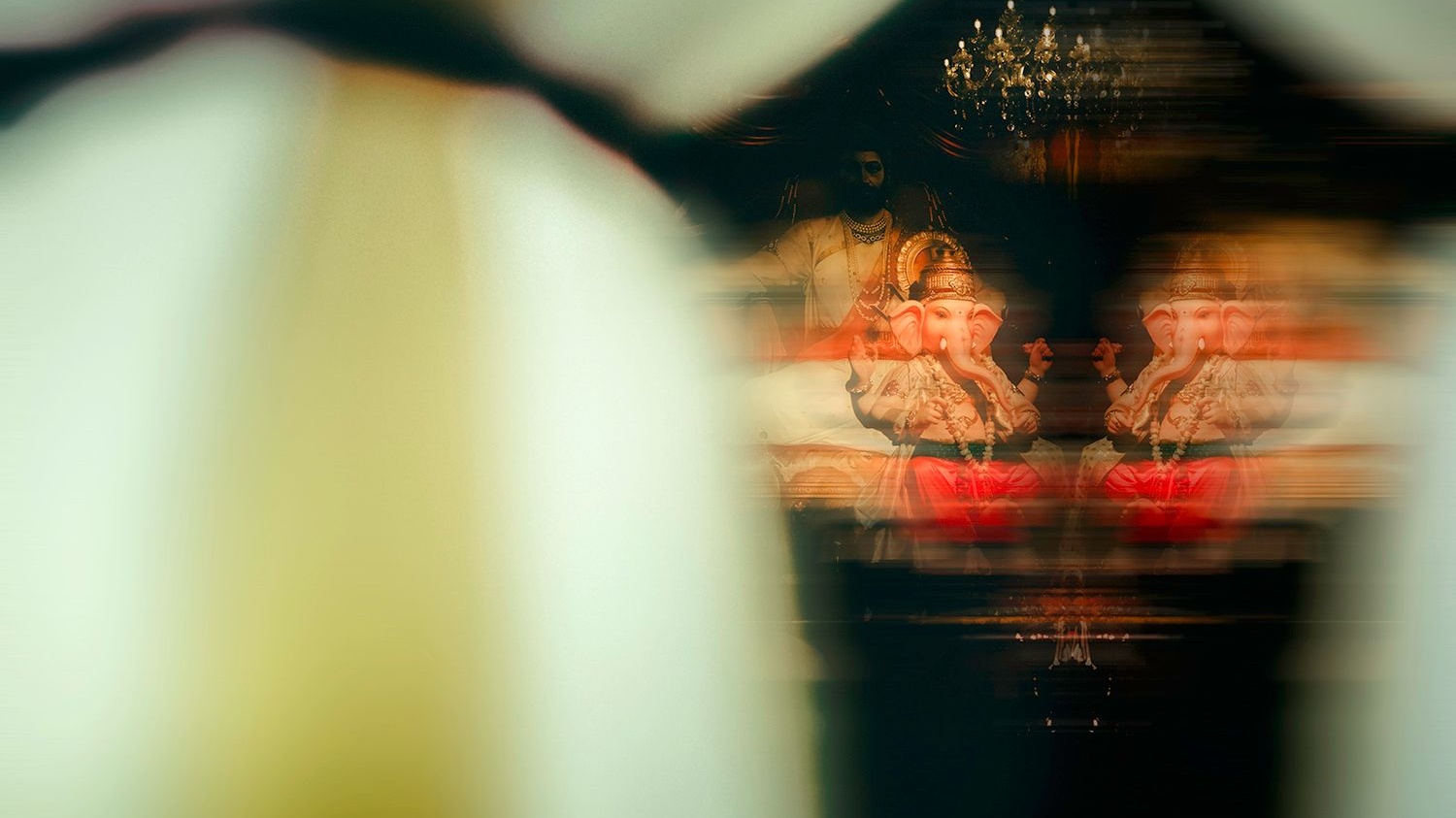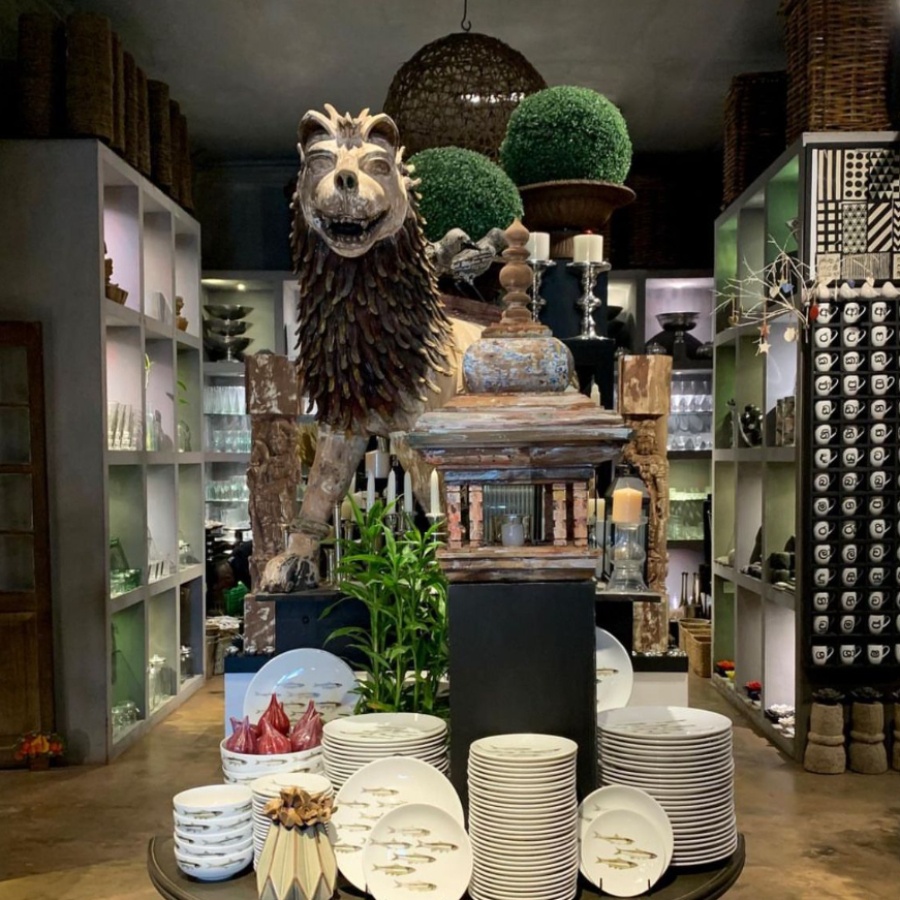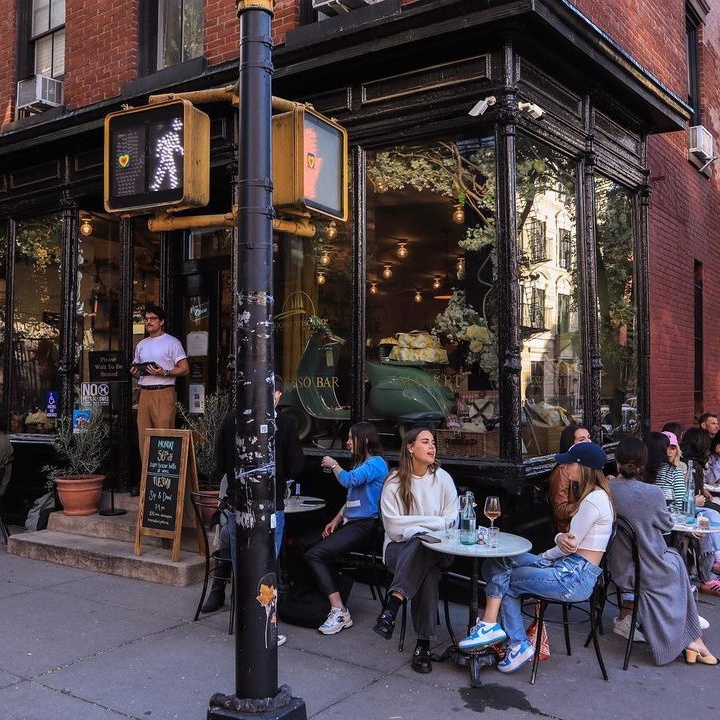Sport /spɔːt/ (noun): “An activity involving physical exertion and skill in which an individual or team competes against another or others for entertainment.”
If you go by this definition, I’ve never been one to play. Tennis, football, cricket—they were always out of my reach (read: capabilities). But the one sport I took to was a local hit—and it has tens of thousands competing—a 10-day marathon, if you please, that takes over my city every year.
For more than a decade now, Ganpati pandal hopping has been my annual sporting endeavour. And if there is one thing that even an amateur will tell you, it is that this is not a solo sport, but one that needs a solid team. Which is why, every year, armed with just the bare necessities (a bottle of water, a purse full of coins, an instrument to tally our score, an umbrella, and an empty belly), I’ve gone on a pandal-hopping spree across Mumbai’s Matunga neighbourhood with my parents, aunt, and uncle as my trusted teammates. Our personal best so far has been visiting 107 pandals in one evening. How do we do it? Read on.
An empty belly is the starting point of this sport. Before we chart out the most sought-after pandals to visit, we plan our food breaks. Matunga, the indisputable centre of South Indian cafés, is where the udipis reign supreme.
It’s 5:30 pm, and before we hit the starting line, a Mysore saada dosa, kadak, with extra chutney and extra sambhar at A Rama Nayak & Sons Udipi is top of mind.
Near Chaar Rasta, a corn seller lures serial worshippers with his smoky offerings, so we pick one up to pay our respects to the Ganesh idols that line nearby Lady Jehangir Road. Next, in Matunga market, we meet the famous icon at Bhandarkar Road Savajanik Ganesh Mahotsav Seva Samiti. It’s large, almost 11 ft tall, and adorned with a silver hand that has, over the past many years, been serenaded by many priests and a traditional aarti.
We pick up pace as we go deeper into the market where another iconic idol resides. Made by the flower sellers of Matunga, Phool Galli Ganpati, as his name suggests, is an aromatic display made up of flowers, with petals carefully arranged in the shape of peacocks, elephants, and modaks.
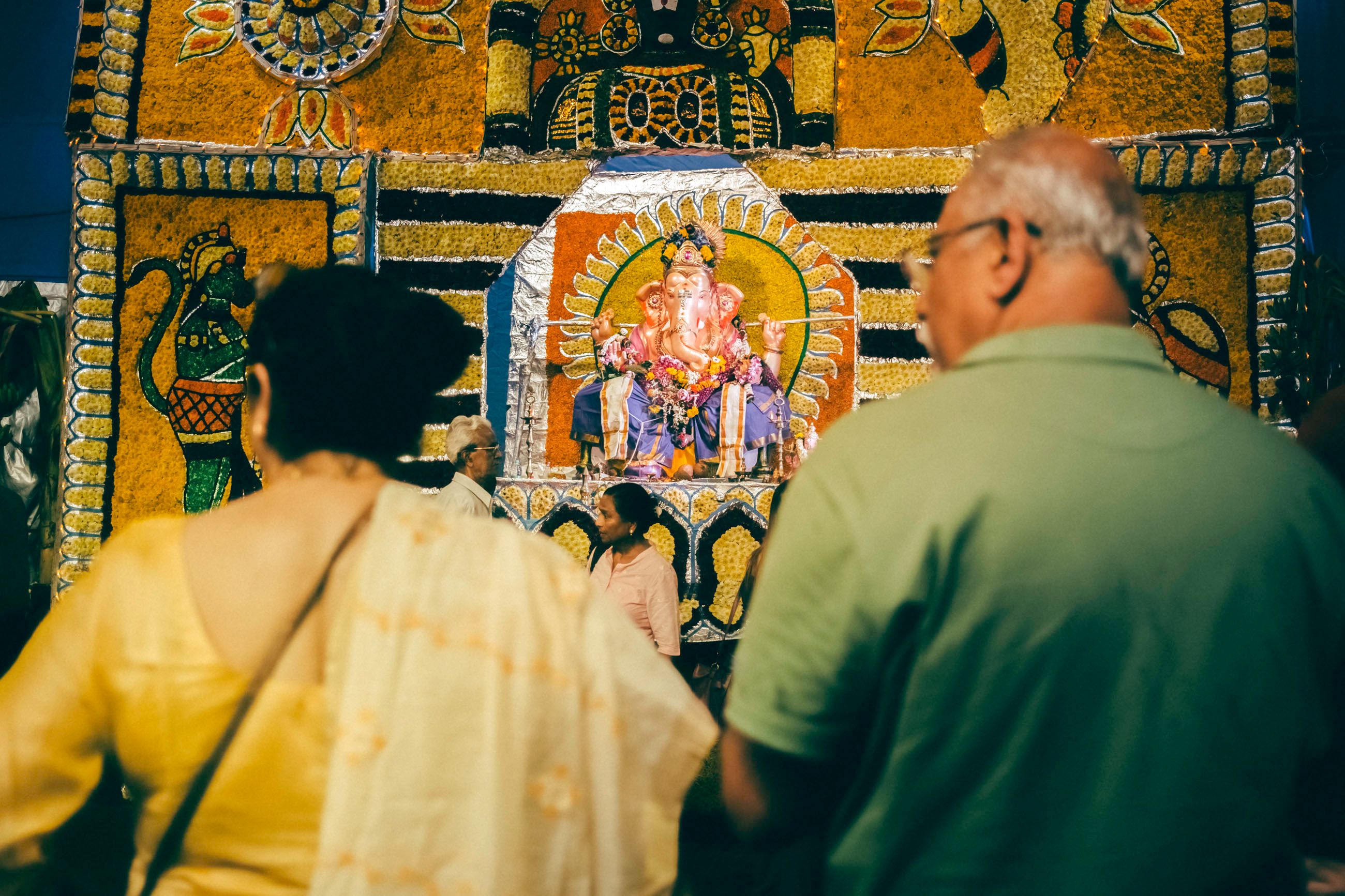
Phool Galli Ganpati
Looking at this year’s showcase is a good time to start comparing it to last last year’s, which, naturally, leads to a discussion about replicating previous routes, which, in turn, leads to an entirely confusing conversation.
“Where’s that big blue Ganpati with the pink background we saw last year?”
“Was it near Ruia College?”
“No no, it’s the one near Don Bosco school.”
And so on.
Our step count hits 5,000, and by now we are 30 Ganpatis down. It’s time to refuel. A round of extra-strong filter coffees later, we head to Matunga station, where the idol-hopping comes with a side of crime. One pandal, Matunga Vighnaharta Mandal, has a picture of Varadarajan Mudaliar—a prolific Mumbai crime boss. And given this venue’s dramatic backstory, the decor here is grand, with a waterway leading up to a heavily adorned Ganesh.
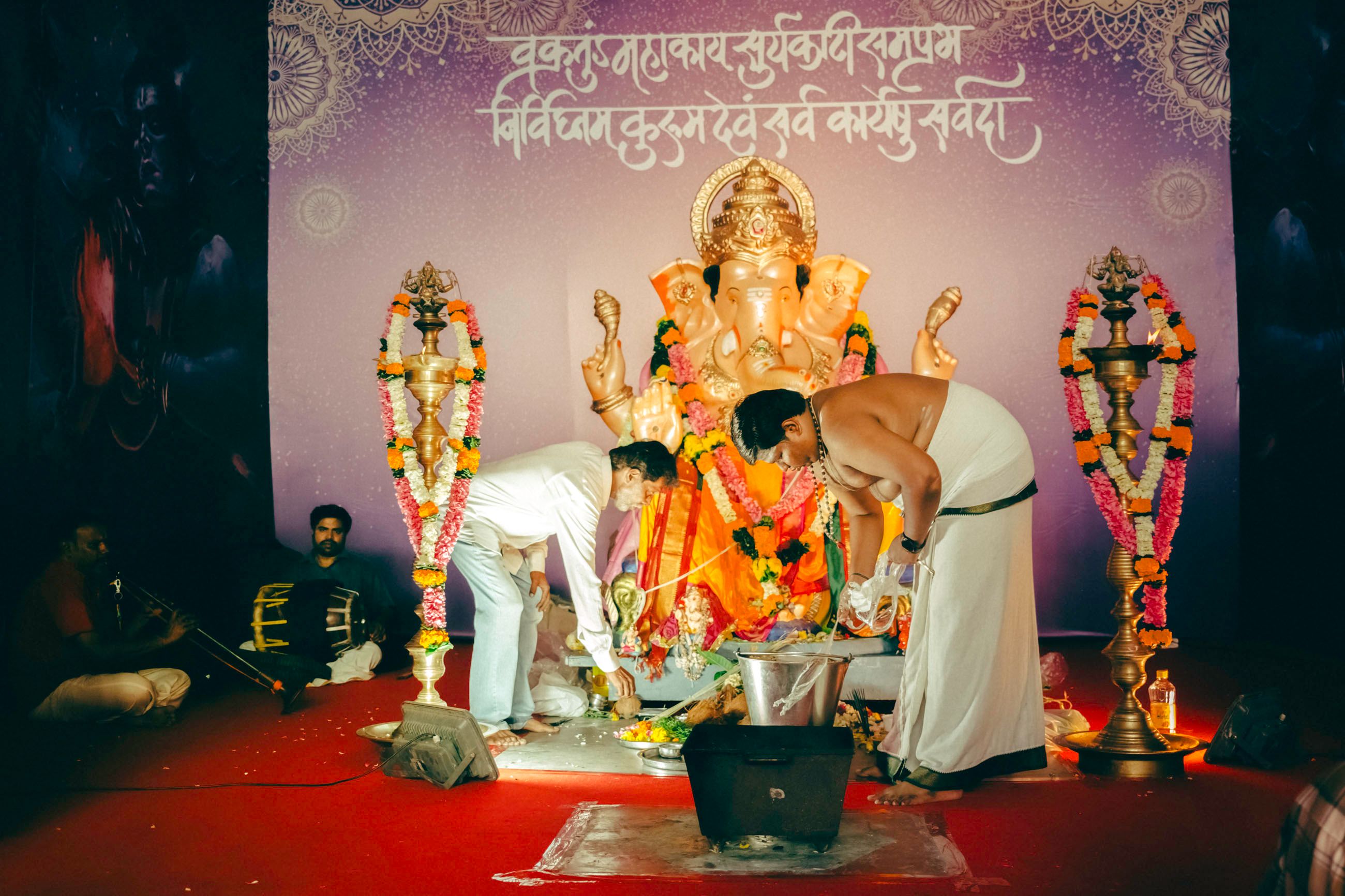
Even on a time-crunched mission such as ours, we can’t help but admire the artistry and unique theme of each pandal—it’s perhaps the main motivation that pushes my folks to hit a higher number every year as we set out on our annual expedition. The pandal near Ruia College, for example, is unanimously loved. Occupying an entire footpath, it has a different theme each year, through which a social message is delivered. From sustainability to women’s empowerment, we are always kept guessing what might come next. Up ahead, opposite Matunga Gujarati Club, lies the Pragati Seva Mandal Ganeshotsav, where a lesser-known but equally grand Shiva-inspired Ganesh awaits—this one’s USP is that while most idols are seated, he stands tall (and is the true exemplar of a properly buff hero).
We’re now halfway to our target, which means it’s now time to systematically navigate the confusing bylanes of Matunga. Packed with smaller pandals, this is a great place to get ahead on your count. These smaller pandals are also my favourite ones to visit—where building residents are keenly involved and kids argue over who gets to offer visitors the prasad.
Laxmi Narayan lane has a play-based pandal that is a hit with all the kids (and at age 26, it still gives me joy) and has visitors queueing up for it every year. Who wouldn’t get in line for a 10-minute mechanical performance about Lord Ganesh, complete with voice-overs and sound-and-light effects?
Now 65 Ganpatis down, our stomachs are rumbling. We head straight to Dr Babasaheb Ambedkar Marg, where a mammoth building called Tejukaya is a food-stall hub. We inhale our vada pav and Thums Up and continue on the shaded, tree-lined road to see pandals in neighbouring buildings.
By about 11 pm, we’re in the home stretch—and we say a heartfelt thanks to Ganesh that the final 20 pandals will be covered by car, not by foot. First up is the pandal that has been in the news for its ridiculous insurance cover (₹400 crore!)—the GSB Seva Mandal Ganpati. Last year’s reports suggested the murti was covered in 69 kg of gold and 336 kg of silver; this year, I think, it’s likely to equal the GDP of Singapore.
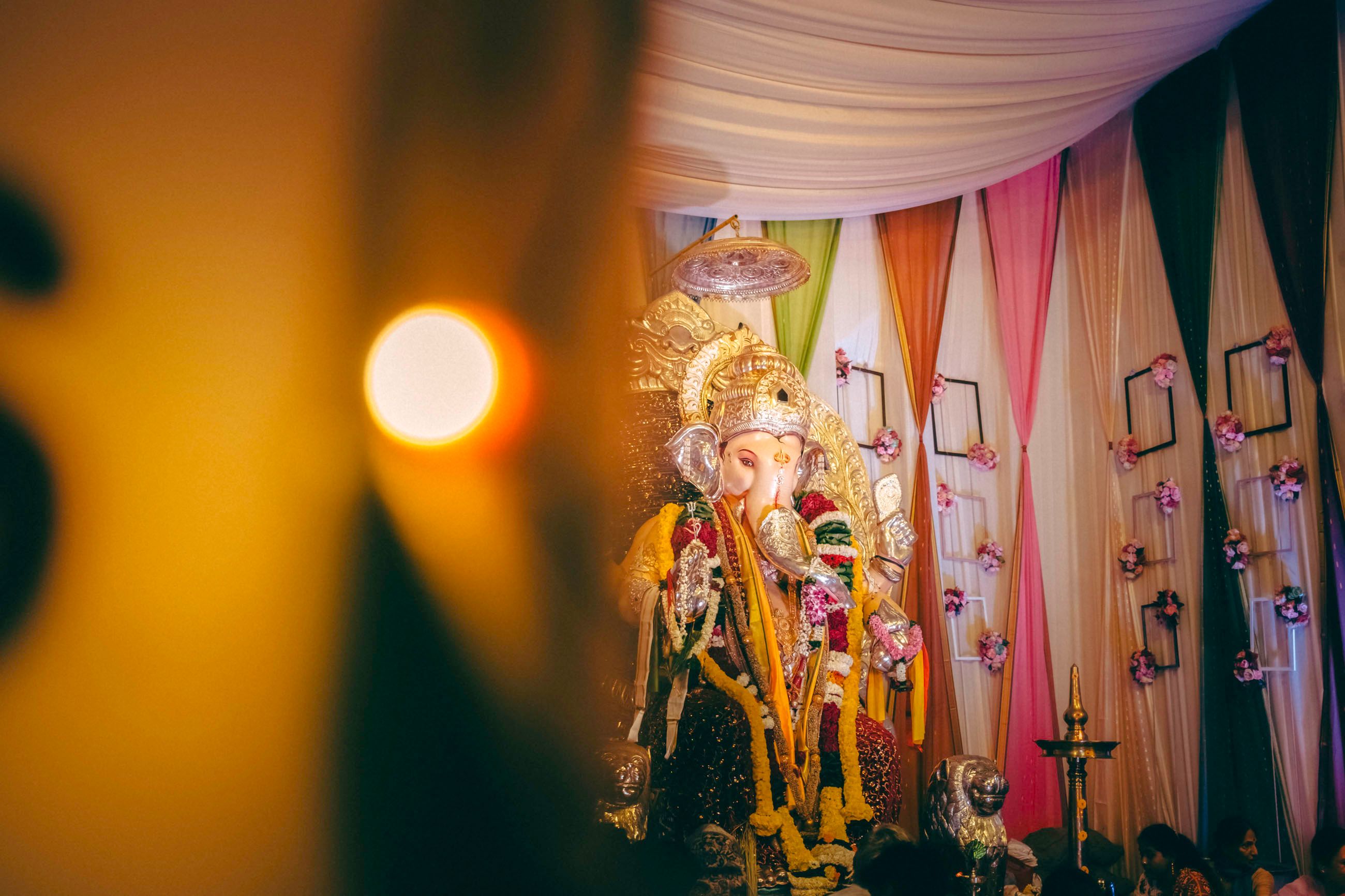
As with every competitive sport, there are tricks of the trade to help you achieve your targets. Ours is to drive through Sion and Wadala. With eyes wide open, we scour our assigned sides of the road. Only the most beautifully decorated pandals warrant stepping out of the car; the rest get a wave and a prayer.
As the tally ticks 100, celebration is warranted. At that hour, sweaty and dead tired, only an ice-cold orange candy bar or a bright-pink raspberry dolly from a corner store will do. It’s the perfect way to end our expedition as we exchange notes and discuss how to take it up a notch next year.
Pro tip: If you want to hit the 100+ number, step out on the fifth day, aka Gauri Visarajan, when more Ganpatis than cars crowd the road.
